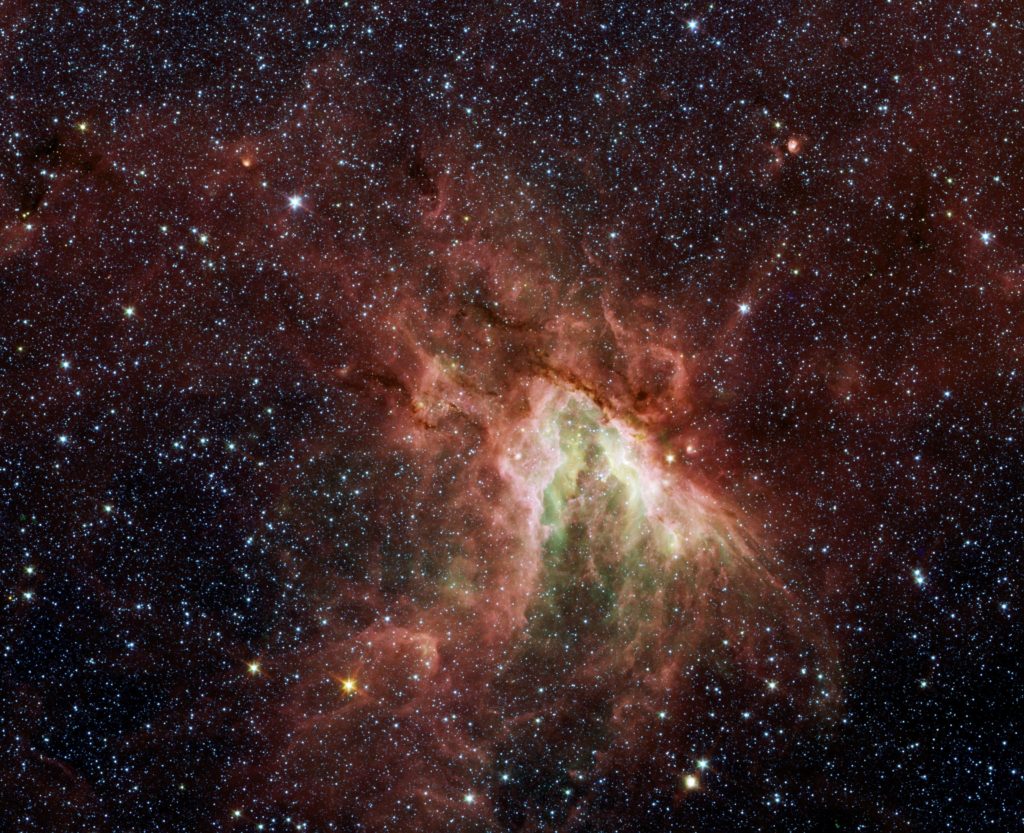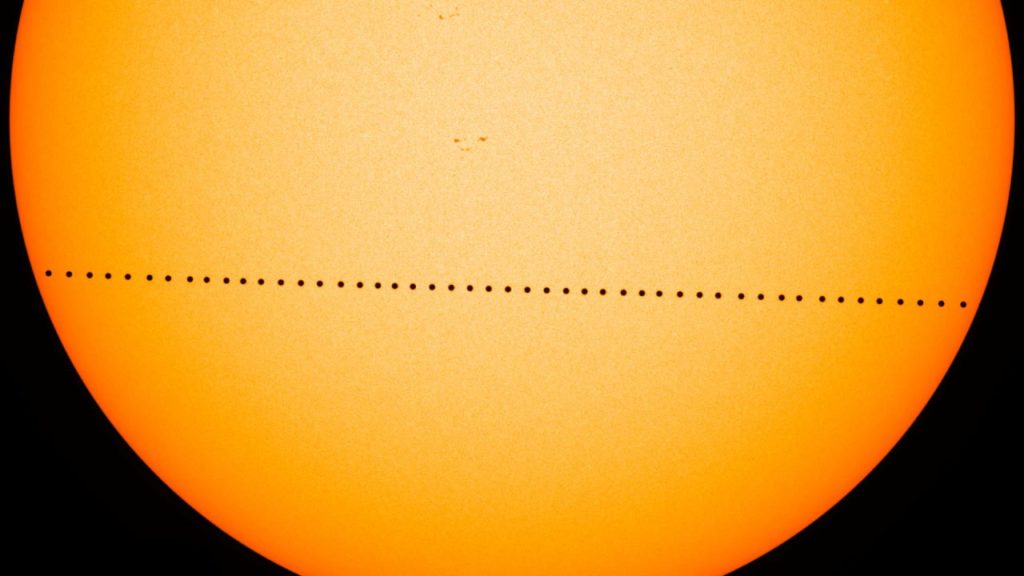
Venus continues to emerge into the evening sky this month. Look low in the southwest at dusk for the brightest thing there.
Jupiter remains in the evening sky for one last month. Look low in the southwest at dusk. Venus passes close by—within 1.5 degrees— on November 24. By month’s end, it is becoming lost in the Sun’s glare.
Saturn is also in the evening sky. Although it is not as bright as Jupiter, you can find it easily at some distance to the left of Jupiter.
Mars gradually emerges into the morning sky this month. Look low in the east at dawn, beginning mid-month. Mars is slightly higher in the morning sky as the month ends.

Constellations in the November southern sky are almost entirely devoid of bright stars. They represent beasts and gods related to water, indicating that they are part of the ‘Celestial Sea’. Examples are Aquarius, the Water Bearer and Pisces, the Fish. Even Capricornus, the Goat, has a fish tail because he’s originally Ea, Babylonian god of the waters. Below Aquarius is the one bright star in this area, Fomalhaut, marking the mouth of the Southern Fish. Ancient Mesopotamians imagined that the Persian Gulf extended upwards into the sky, joining this ‘sea’ of dim stars.
As the autumn ‘intermission’ in between the bright stars of summer and winter continues, Houstonians with a clear southern horizon can try to find a star that few Americans get to see. Due south and very low to the horizon at about 10:00 pm in mid-November is Achernar, 9th brightest star in the sky. It marks the end of the river Eridanus, another of the dim watery patterns that fill the southern autumn sky. If you can find it, Achernar will seem of average brightness because it is shining through so much air. Still, it is a good way to remind yourself that the stars we see depend on our latitude, and that the sky on the Gulf Coast is similar to, but not the same as, what most Americans see.
Moon Phases in November 2019:
1st Quarter Nov. 4, 4:23 a.m.
Full Nov. 12, 7:34 a.m.
Last Quarter Nov. 19, 3:11 p.m.
New Nov. 26, 9:06 a.m.
Sunday, November 3, is the first Sunday of November. Therefore, Daylight Saving Time ends and we ‘fall back’ to standard time at 2:00 am that morning. (The time goes from 1:59 back to 1:00, such that the 1 am hour happens twice). Don’t forget to set your clocks, and enjoy your extra hour of sleep!

Photo Credit: NASA Goddard Space Flight Center
On Monday, November 11, Mercury passes exactly between the Earth and the Sun. The alignment is so exact that Mercury transits the Sun. That is , it appears in silhouette against the Sun’s disk. At sunrise on the 11th here in Houston, Mercury is already visible on the Sun’s disk. We can then watch Mercury move across the center of the Sun’s disk until it moves off at 12:04 pm. Weather permitting, we will observe this event outside the Museum entrance near the sundial. Public observing begins at 9:00 (when the Museum opens) and lasts until 12:04. Let’s hope we get to see this, as the next Mercury transit visible in Houston is in 2049!
Clear Skies!

